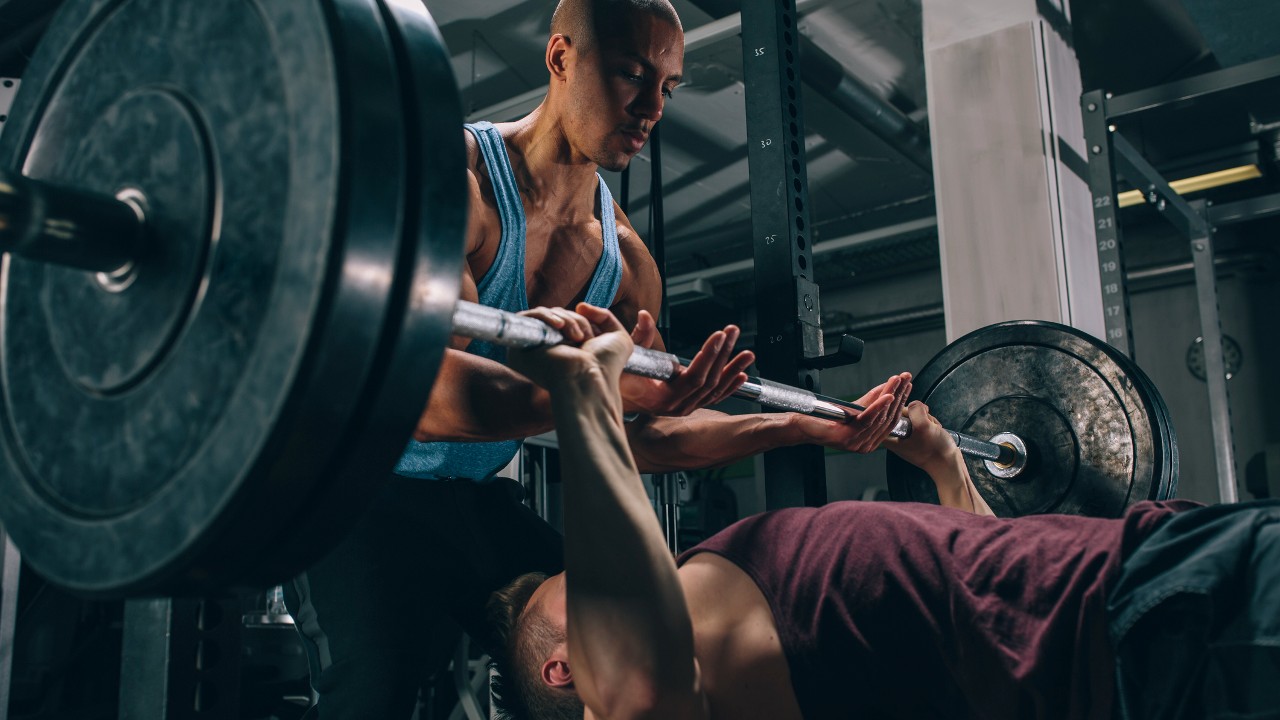How To Bench More
Use these expert tips and form guide to help you improve how much weight you can bench

The bench press is one of the big three lifts and a move that almost every weights room regular wants to get better at. It’s one of the best chest exercises you can do and it simply feels (and looks) fantastic to press a massive bar laden with weights above you.
If you’re looking for ways to improve your bench press form so you can get better at the exercise, then you’ve come to the right place. We’ve enlisted Emily Servante, trainer education manager at Ultimate Performance, for her tips for the lift, including a detailed form guide to make sure you’re doing it right.
Form Guide
Before we go into more general tips, here’s Servante’s form guide.
The set up
Using a PowerPlate between sets can increase power output. One study found that subjects who rapidly vibrated their chest muscles increased power output by five per cent over those who rested.
- Position your feet shoulder-width apart, under or behind your knees and flat on the floor.
- Lie back on the bench with your eyes directly under the barbell.
- Place your hands on the barbell with an overhand grip, roughly one-and-a-half times shoulder-width apart.
- Raise your chest and pinch your shoulder blades back together.
- Your head, shoulders and glutes should be touching the bench, and there will be a small gap between your lower back and the bench.
- Pull the barbell forwards off the hooks and into the start position directly above your shoulders.
- Pause to let the barbell settle, then fine-tune your position before starting the set.
The movement
- From the start position, control the barbell down towards the lower half of your chest.
- Throughout the downward movement, your upper arms should be at an angle of 45-60° to your torso.
- You have reached the end of your range of motion when you cannot lower your elbows any further below shoulder height without your chest collapsing and shoulders rotating inwards.
- Pause for a moment, then press the barbell up to return to the start position.
- On the last rep, fully extend your arms and then move the barbell back towards the hooks.
How To Bench More
Change your angles
“The bench press is a multi-joint exercise that primarily targets the pec major and minor muscles, the triceps and the anterior deltoids,” says Servante. “The most important thing to remember with any pressing exercise is that all three of these muscle groups will always be working. But the angle at which you set the bench will mean that you can increase the challenge to the chest or the deltoids, depending on your goal. The lower the angle, the more emphasis there will be on the pectorals. The higher the angle of the bench, the greater the challenge to the anterior deltoids.” Use a combination of the incline bench press and decline bench press to develop strength that will carry over to the flat-bench version.
Get your grip right
“Start with a grip roughly one-and-a-half times shoulder-width apart and test out positions 2-5cm either side to see what feels most comfortable,” says Servante. “Grip the barbell with your entire hand – do not use a thumbless grip because this increases the risk of losing control of the barbell.”
Pull the barbell off the hooks
"Pressing the barbell directly upwards off the hooks can pull your shoulder blades forwards and into an unstable position,” says Servante. “To stop this happening, pull the barbell forwards off the hooks instead, which is much easier with the help of a training partner.”
Get the Coach Newsletter
Sign up for workout ideas, training advice, reviews of the latest gear and more.
Push yourself away from the barbell
“A common mistake is to let your shoulders become loose and shrug upwards at the top of the movement,” says Servante. “This reduces stability and shifts tension away from your chest and on to your shoulders and triceps. Focus on pushing yourself away from the barbell, instead of pressing it away from you. Also be careful not to push your head back into the bench, because this can strain your neck.”

Nick Harris-Fry is a journalist who has been covering health and fitness since 2015. Nick is an avid runner, covering 70-110km a week, which gives him ample opportunity to test a wide range of running shoes and running gear. He is also the chief tester for fitness trackers and running watches, treadmills and exercise bikes, and workout headphones.
